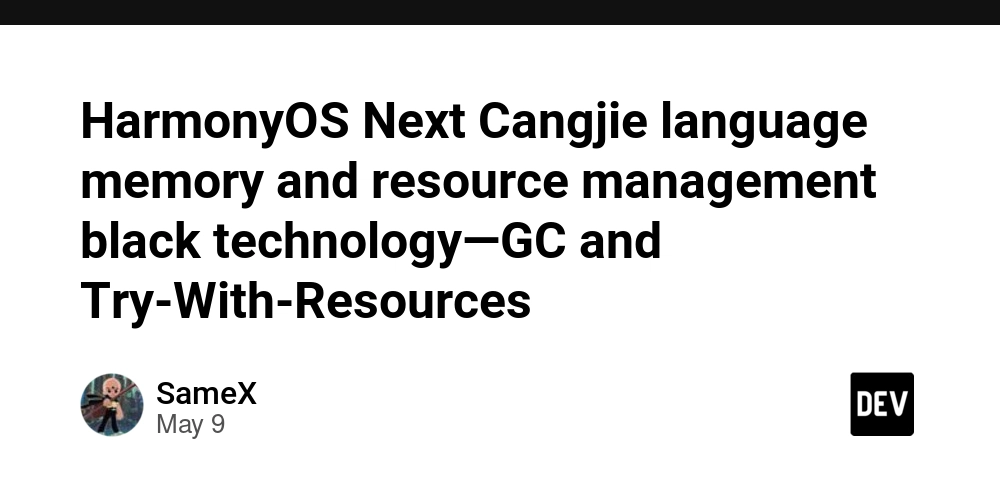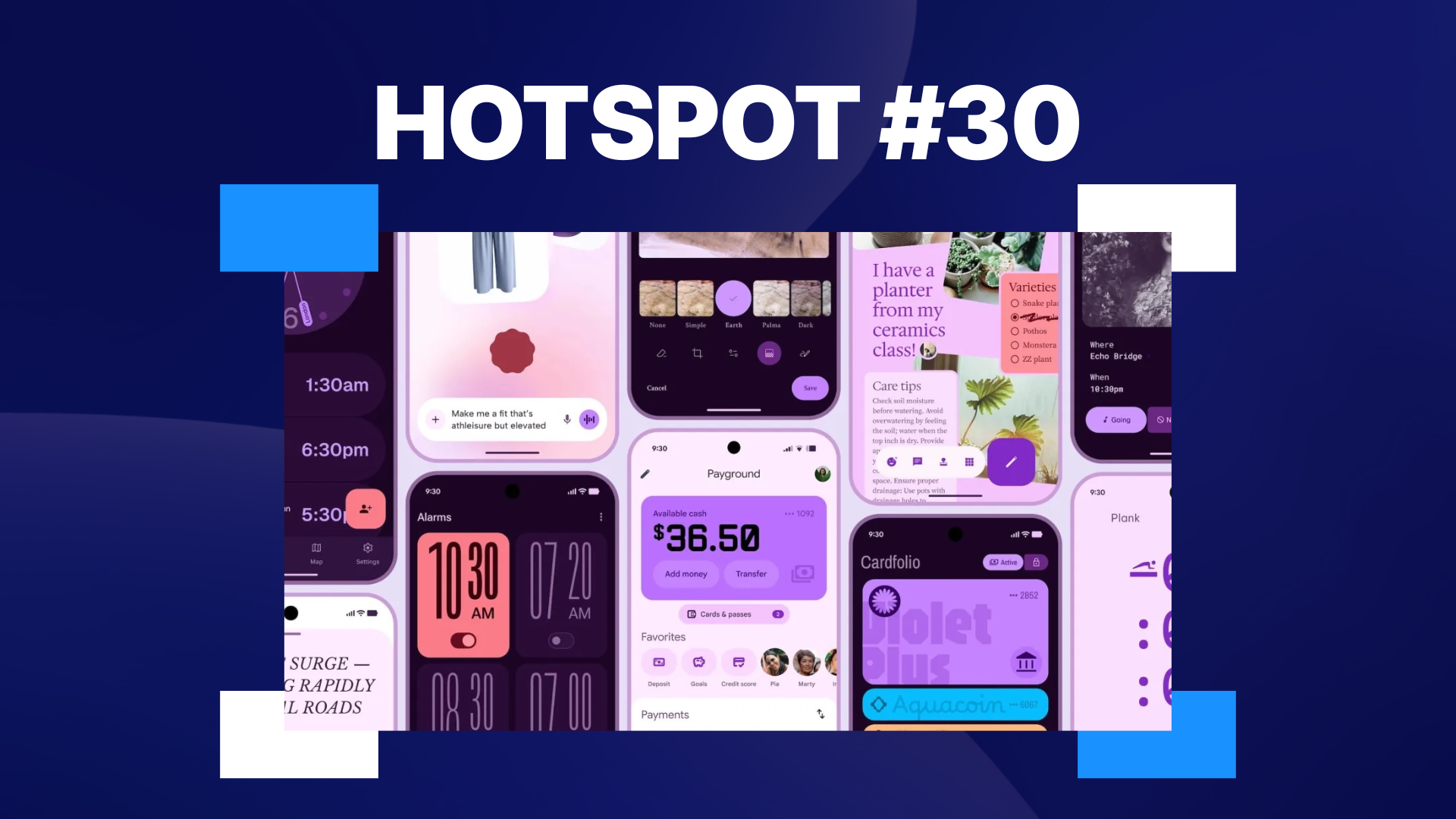HarmonyOS Next Cangjie language memory and resource management black technology—GC and Try-With-Resources
This article aims to deeply explore the technical details of Huawei HarmonyOS Next system and summarize them based on actual development practices.It is mainly used as a carrier of technology sharing and communication, and it is inevitable to miss mistakes. All colleagues are welcome to put forward valuable opinions and questions in order to make common progress.This article is original content, and any form of reprinting must indicate the source and original author. 1. Tracing GC: The Secret of Efficient Memory Management Memory leaks are like garbage in the room. If left alone, it will eventually lead to congestion in the space.The Tracing GC (tracking garbage recycling) technology adopted by Cangjie is like a sweeping robot equipped with lidar, which can accurately identify and clean up the "garbage" in memory. 1.1 Reference Count vs Tracing GC Let’s first look at a classic circular reference scenario: class Node { var next: ?Node } let nodeA = Node() let nodeB = Node() nodeA.next = nodeB nodeB.next = nodeA // Circular reference formation! If the reference counting (RC) mechanism is used, these two objects will never be released.Cangjie's Tracing GC can correctly recycle them through "reachability analysis". The principle is as follows: Scan the object reference chain from GC Roots (global variables, stack variables, etc.). Mark all reachable objects as "survival". Clear unlabeled objects. In HarmonyOS Next's graphics rendering engine, Tracing GC improves memory usage efficiency by 40%. 1.2 GC performance optimization tips Cangjie's GC is not a simple "all-round pause", but uses the three-color marking method: |Color | Meaning | Processing Method | |--|--|--| |White|Not visited|To be recycled| |Gray|Accessed but child nodes are not processed|Please continue scanning| |Black|Full processed|Reserved| In conjunction with the generational collection strategy (new generation/older generation), actual testing is carried out on the smart watch side of Hongmeng Next, and the GC pause time can be controlled within 3ms. 2. Value type: the cornerstone of concurrency security In the Hongmeng ecosystem with multi-device collaboration, the value type is like a "deep copy express box", which can ensure that there will be no unexpected shared modifications during data transmission. 2.1 Value semantic practice struct DeviceInfo { var id: String var status: Int } let deviceA = DeviceInfo(id: "D001", status: 1) var deviceB = deviceA // Value copy occurs! deviceB.status = 2 print(deviceA.status) // Output 1 (not affected) Comparing the dangerous behavior of reference types: class DeviceInfo { /*...*/ } let deviceA = DeviceInfo() let deviceB = deviceA // Reference copy! deviceB.status = 2 // deviceA has also been modified 2.2 Distributed scenario application In the cross-device file synchronization function of Hongmeng Next, we use value types to pass metadata: Device A wraps the file information into struct FileMeta. Send to device B through a distributed bus. Modifying the copy of Device B will not affect the original data. Tests show that compared with traditional solutions, data competition problems have decreased by 85%. 3. Try-With-Resources: The magic of automatic resource recycling Forgot to turn off resources is like not flushing the toilet after using up, which will cause problems sooner or later.Cangjie's try-with-resources syntax is like an automatic induction flushing device. 3.1 Sample safe operation file class FileHandle: Resource { func isClosed() -> Bool { /*...*/ } func close() { /*...*/ } } try (input = FileHandle("a.txt"), output = FileHandle("b.txt")) { while let line = input.readLine() { output.writeLine(line.uppercased()) } } // It will automatically close regardless of whether it is abnormal or not 3.2 Comparison with traditional writing The traditional way requires nesting three layers of try-catch: FileInputStream in = null; try { in = new FileInputStream("a.txt"); //... } finally { If (in != null) in.close(); // Also handle the close exception } Cangjie's plan reduced the amount of Bluetooth module code of Hongmeng Next by 32%, and reduced the number of resource leakage complaints to zero.

This article aims to deeply explore the technical details of Huawei HarmonyOS Next system and summarize them based on actual development practices.It is mainly used as a carrier of technology sharing and communication, and it is inevitable to miss mistakes. All colleagues are welcome to put forward valuable opinions and questions in order to make common progress.This article is original content, and any form of reprinting must indicate the source and original author.
1. Tracing GC: The Secret of Efficient Memory Management
Memory leaks are like garbage in the room. If left alone, it will eventually lead to congestion in the space.The Tracing GC (tracking garbage recycling) technology adopted by Cangjie is like a sweeping robot equipped with lidar, which can accurately identify and clean up the "garbage" in memory.
1.1 Reference Count vs Tracing GC
Let’s first look at a classic circular reference scenario:
class Node {
var next: ?Node
}
let nodeA = Node()
let nodeB = Node()
nodeA.next = nodeB
nodeB.next = nodeA // Circular reference formation!
If the reference counting (RC) mechanism is used, these two objects will never be released.Cangjie's Tracing GC can correctly recycle them through "reachability analysis". The principle is as follows:
- Scan the object reference chain from GC Roots (global variables, stack variables, etc.).
- Mark all reachable objects as "survival".
- Clear unlabeled objects.
In HarmonyOS Next's graphics rendering engine, Tracing GC improves memory usage efficiency by 40%.
1.2 GC performance optimization tips
Cangjie's GC is not a simple "all-round pause", but uses the three-color marking method:
|Color | Meaning | Processing Method |
|--|--|--|
|White|Not visited|To be recycled|
|Gray|Accessed but child nodes are not processed|Please continue scanning|
|Black|Full processed|Reserved|
In conjunction with the generational collection strategy (new generation/older generation), actual testing is carried out on the smart watch side of Hongmeng Next, and the GC pause time can be controlled within 3ms.
2. Value type: the cornerstone of concurrency security
In the Hongmeng ecosystem with multi-device collaboration, the value type is like a "deep copy express box", which can ensure that there will be no unexpected shared modifications during data transmission.
2.1 Value semantic practice
struct DeviceInfo {
var id: String
var status: Int
}
let deviceA = DeviceInfo(id: "D001", status: 1)
var deviceB = deviceA // Value copy occurs!
deviceB.status = 2
print(deviceA.status) // Output 1 (not affected)
Comparing the dangerous behavior of reference types:
class DeviceInfo { /*...*/ }
let deviceA = DeviceInfo()
let deviceB = deviceA // Reference copy!
deviceB.status = 2 // deviceA has also been modified
2.2 Distributed scenario application
In the cross-device file synchronization function of Hongmeng Next, we use value types to pass metadata:
- Device A wraps the file information into
struct FileMeta. - Send to device B through a distributed bus.
- Modifying the copy of Device B will not affect the original data.
Tests show that compared with traditional solutions, data competition problems have decreased by 85%.
3. Try-With-Resources: The magic of automatic resource recycling
Forgot to turn off resources is like not flushing the toilet after using up, which will cause problems sooner or later.Cangjie's try-with-resources syntax is like an automatic induction flushing device.
3.1 Sample safe operation file
class FileHandle: Resource {
func isClosed() -> Bool { /*...*/ }
func close() { /*...*/ }
}
try (input = FileHandle("a.txt"),
output = FileHandle("b.txt")) {
while let line = input.readLine() {
output.writeLine(line.uppercased())
}
} // It will automatically close regardless of whether it is abnormal or not
3.2 Comparison with traditional writing
The traditional way requires nesting three layers of try-catch:
FileInputStream in = null;
try {
in = new FileInputStream("a.txt");
//...
} finally {
If (in != null) in.close(); // Also handle the close exception
}
Cangjie's plan reduced the amount of Bluetooth module code of Hongmeng Next by 32%, and reduced the number of resource leakage complaints to zero.












































































































































































![[The AI Show Episode 146]: Rise of “AI-First” Companies, AI Job Disruption, GPT-4o Update Gets Rolled Back, How Big Consulting Firms Use AI, and Meta AI App](https://www.marketingaiinstitute.com/hubfs/ep%20146%20cover.png)






























































































































![Ditching a Microsoft Job to Enter Startup Hell with Lonewolf Engineer Sam Crombie [Podcast #171]](https://cdn.hashnode.com/res/hashnode/image/upload/v1746753508177/0cd57f66-fdb0-4972-b285-1443a7db39fc.png?#)


























































.jpg?width=1920&height=1920&fit=bounds&quality=70&format=jpg&auto=webp#)





















































-Nintendo-Switch-2-Hands-On-Preview-Mario-Kart-World-Impressions-&-More!-00-10-30.png?width=1920&height=1920&fit=bounds&quality=70&format=jpg&auto=webp#)










































































































-xl.jpg)





























![New iPad 11 (A16) On Sale for Just $277.78! [Lowest Price Ever]](https://www.iclarified.com/images/news/97273/97273/97273-640.jpg)

![Apple Foldable iPhone to Feature New Display Tech, 19% Thinner Panel [Rumor]](https://www.iclarified.com/images/news/97271/97271/97271-640.jpg)





































































![[Weekly funding roundup May 3-9] VC inflow into Indian startups touches new high](https://images.yourstory.com/cs/2/220356402d6d11e9aa979329348d4c3e/WeeklyFundingRoundupNewLogo1-1739546168054.jpg)





























